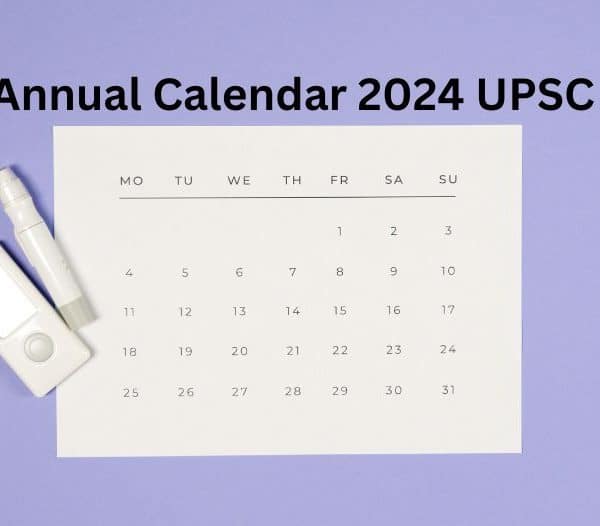The government is looking for exemplary individuals, equipped with expertise in economic affairs, revenue, commerce, agriculture, financial services, cooperation and farmers’ welfare, shipping, road transport and highway, civil aviation, forests and climate change, environment, new and renewable energy.
The UPSC lateral entry IAS mode is an attempt by the Indian government in order to bring in fresh, new talent into the bureaucracy. This is the lateral entry meaning.
In the advertisement for recruitment through lateral entry by the Personnel Ministry, the notified post is ‘joint secretary’ level. It is generally filled by officers selected through the conduct of UPSC (Union Public Service Commission) Civil Services Examination.
Joint Secretaries are at an important level of senior management in the Government of India. They are responsible for lead policymaking in the nation’s governance. Execution of various programmes and schemes for the department is also assigned to them.
Appointment by Lateral Entry
In response to the notification, the government obtained over 6,000 applications. The task to select and recruit candidates was given to the UPSC. The joint-secretary level appointees will have an initial term of three years that will be extendable for up to five years.
The government-appointed nine private sector experts as joint secretaries in different departments through lateral hiring. These include:
| S. No. | Department / Ministry | Name of the Joint Secretary | Previous Organization |
| 1 | Department of Agriculture, Co-operation and Farmers’ Welfare | Kakoli Ghosh | Food and Agriculture Organization |
| 2 | Ministry of Civil Aviation | Amber Dubey | Consultancy KPMG’s partner and India head of aerospace and defence |
| 3 | Department of Commerce | Arun Goel | |
| 4 | Department of Economic Affairs | Rajeev Saksena | Former banker and Director SAARC Development Fund’s– infrastructure and economic |
| 5 | Ministry of Environment, Forest and Climate change | Sujit Kumar Bajpayee | NHPC Ltd.’s senior manager (environment) |
| 6 | Department of Financial Services | Saurabh Mishra | |
| 7 | Ministry of New and Renewable Energy | Dinesh Dayanand Jagdale | wind energy firm, Pune-based, Panama Renewable Group’s CEO |
| 8 | Ministry of Road Transport and Highways | Suman Prasad Singh | |
| 9 | Ministry of Shipping | Bhushan Kumar |
Advantages of Lateral Entry
Some of the advantages of lateral entry in the IAS include:
- Complexity: Governance is turning out to be more and more complex, requiring specialised skills. A generalist officer may not always be expected to be up-to-date with such specialized knowledge.
Therefore, experts with specialist domain knowledge are needed to navigate through the complex needs of current administrative challenges.
- Personnel Shortage: According to the Department of Personnel and Training data, there is a scarcity of about 1500 IAS officers in the Government of India. Lateral entry will enable to bridge this huge gap.
- Organisation Culture: Lateral entry will assist in bringing about a change in organizational culture in the government sector.
It is expected to bring in the values of economy, efficiency and effectiveness. It is also hoped that lateral hiring will help in building a culture of performance within the public sector.
- Participatory Governance: In recent times governance is far more participatory and a multi-actor enterprise.
Thus, lateral entry offers stakeholders, for instance, the non-profit organizations and the private sector, an opportunity to participate in the governance process of the nation.
Also Read : Sectors of Indian Economy McQ: Learn More About Sectors of Indian Economy
Issues Involved
- Need for Transparent Process: Selection of the right people in a manner which is transparent is essential. The constitutional role of the UPSC will provide legitimacy to the entire process of recruitment. This should not be ignored.
- The difference in Organisational Values: The value systems between the public and the private sector are quite different. It is crucial to ensure that the selected experts are skilled enough to adjust to an entirely different system of functioning.
- Profit Motive vs. Public Service: The approach of the private sector is profit-oriented, whereas the motive of the government is public service. This is also a basic transition that a private sector person has to make while functioning in the government.
- Internal Resistance: Lateral entry is expected to face tough conflict from Civil Servants in-service and their associations.
- Narrow Scope: Lateral entry only at the top-level policymaking positions may possibly have little influence on field level execution.
- Lack of Specific Criteria: The criteria laid out in the notification were broad-based, and so, it failed to grant a narrow window to attract domain experts of eminence, in the fields advertised for.
Conclusion
The government has not made any recruitment to civil services through lateral entry since its ambitious plan, last year.
Several sceptics within the civil services view the slow movement on the scheme of lateral entry, as a justification of their certainty that bureaucracy can’t be revamped with the introduction of a few professionals.
Some stakeholders have also said that the ‘domain experts’ employed have been subsumed by the system.
UPSC Pathshala’s personal mentors are experts of UPSC with years of experience who ensure the development of the candidate. They also offer a free demo class and have trained 15000 plus satisfied students with many selections.
Also Read : Who Heads the Civil Service in a State? Things You Didn’t Know about Civil Service Exams






